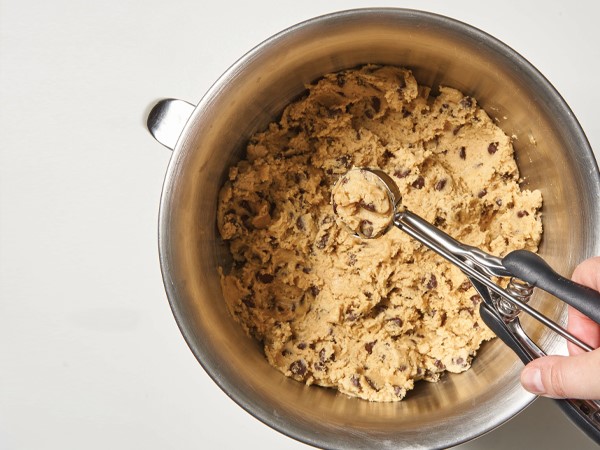Description
There are two types of people in the world, chewy cookie people and crispy cookie people. Whichever one you are, these easy tips and tricks will help you make your ideal cookie.
Sugar
Chewy Cookie: Brown sugar
Crisp Cookie: Granulated sugar
Brown sugar contains molasses which contributes more moisture—hence why it “packs” when you place it in your measuring cup. This yields a much softer cookie.Fat
Chewy Cookie: Shortening
Crisp Cookie: Butter or margarine
In order for a product to be called butter or margarine, it needs at least 80% fat, with the rest of the composition being water. Shortening, however, has more than 80% fat. That means it doesn't release as much water during baking, so your cookies will be soft and chewy. And, if you want your cookie to be somewhere in between, you can always use both!Eggs
Chewy Cookies: an extra egg
Crisp Cookies: no egg, but the cookie will be crumblyEgg yolks have an “emulsifying” quality in doughs and batters. They work to absorb excess water and prevent the dough from separating. However, if you add too many eggs, or even the wrong size eggs, it can throw off the amount of liquid in your batter. So, it's best to simply follow the recipe.
Flour
Chewy Cookie: all purpose or cake flour
Crisp Cookie: all-purpose flour
The main difference between bread flour, all-purpose, and cake flour is the percentage of protein found in each. Bread flour has the highest amount of protein, ranging from 14 to 16%, all-purpose flour has 10 to 12%, and cake flour has 7 to 8%. The more protein the flour has, the more dense and chewy it is due to the gluten proteins.Chilling
Chewy Cookie: 30 minutes in the fridge
Crisp Cookie: straight into the oven
Spending time in the fridge hardens the fat, causing the cookie to “unthaw” slowly in the oven. The colder the cookies are before they go in the oven, the less they will spread and the thicker and chewier they will be.Related Content, Dessert
Cranberry-Gingerbread Refrigerator CookiesPan Preparation
Chewy Cookie: ungreased cookie sheet
Crisp Cookie: greased cookie sheet
Most cookies have a high percentage of fat and therefore don't require a greased cookie sheet. But, if you plan on greasing your cookie sheet, the nonstick cooking spray will allow the cookies to spread and even contribute to a darker bottom.Bake Time
Chewy Cookie: Shorter bake time
Crisp Cookie: Longer bake time
The longer your cookie is in the oven, the more time it has to release moisture, spread, and brown. But, if you prefer cookies to be soft and fluffy, only bake them until they are slightly golden brown around the outside.Related Content, Dessert
Thin, Crispy Chocolate Chip CookiesStorage
After your cookies have baked to perfection, it’s important to store them correctly so you can enjoy them for days to come. The most important part is making sure your cookies are completely cool before placing them in an air-tight container. If your cookies are warm, they will continue to give off heat which will turn to steam and cause your cookies to lose their texture and become crumbly and stick together.

